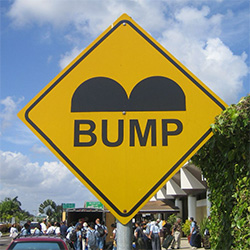When it comes to enhancing road safety and managing traffic speed, communities often consider installing speed bumps or speed humps. While both options are effective in slowing down vehicles, each has distinct characteristics that make it more suitable for certain situations. But how do you determine which is the best fit for your community? This decision can be challenging, as it involves balancing various factors such as safety, cost, and community preferences. In this comprehensive guide, we’ll explore the key considerations to help you make an informed choice between speed bumps and speed humps.
Choosing the Right Traffic Calming Solution: Speed Bumps vs. Speed Humps
Assessing Community Needs
The first step in selecting the appropriate traffic calming measure is to thoroughly assess the specific needs of your community. This assessment should include a detailed analysis of traffic patterns, speed issues, and the presence of pedestrians and cyclists.- Traffic Volume and Speed
- Understanding Traffic Flow: Analyze the volume of traffic that passes through the area. High-traffic zones may require more robust solutions to ensure effective speed reduction.
- Speed Limits and Violations: Evaluate the current speed limits and identify any issues with speeding. If excessive speeding is a problem, more aggressive measures like speed bumps may be necessary.
- Pedestrian and Cyclist Considerations
- Safety Concerns: Consider areas with high pedestrian traffic, such as near schools, parks, and shopping centers. Slower traffic in these areas can significantly enhance safety for walkers and cyclists.
- Community Demographics: The presence of vulnerable populations, such as children and elderly residents, should also be factored into the decision-making process. Speed humps, which offer a gentler slowdown, may be more appropriate in such areas.
Evaluating Cost and Maintenance
Cost and maintenance are crucial factors to consider when choosing between speed bumps and speed humps. Both options come with different price tags and maintenance requirements, which can impact the overall budget and long-term sustainability.- Cost Considerations
- Installation Costs: Speed bumps are generally less expensive to install compared to speed humps. However, the total cost will depend on the materials used and the scale of the installation.
- Ongoing Maintenance: While speed bumps may have lower initial costs, they can require more frequent maintenance, especially in areas with high traffic volume or harsh weather conditions. Speed humps, though potentially more costly upfront, often have longer lifespans and require less maintenance.
- Durability and Longevity
- Material Choices: The choice of materials, such as asphalt, rubber, or concrete, can affect the durability and maintenance needs of both speed bumps and humps. For example, rubber speed bumps are flexible and easy to install, but may wear out faster than concrete.
- Weather Considerations: In regions with extreme weather conditions, durability becomes a key concern. Freeze-thaw cycles, heavy rainfall, or intense heat can all impact the longevity of traffic calming devices. Communities in such areas may need to invest in more durable materials and consider the long-term costs of maintenance and repairs.
Community Feedback and Involvement
An often-overlooked aspect of choosing between speed bumps and speed humps is the involvement of the community. Engaging residents and stakeholders in the decision-making process not only helps in gathering valuable insights but also ensures that the chosen solution is widely accepted.- Gathering Community Feedback
- Surveys and Public Meetings: Conduct surveys and hold public meetings to understand the preferences and concerns of community members. This input can reveal specific areas where speeding is a problem or where residents feel unsafe.
- Feedback on Preferences: Understanding whether residents prefer speed bumps or humps can guide the decision. Some may favor the more aggressive speed reduction of speed bumps, while others may prefer the smoother transition offered by speed humps.
- Addressing Concerns and Building Consensus
- Emergency Services: Engage with local emergency services, such as fire departments and paramedics, to understand their concerns regarding speed bumps and humps. Emergency response times can be affected by these traffic calming measures, so their input is crucial.
- Balancing Different Needs: Finding a balance between reducing speeds and ensuring accessibility for emergency vehicles, buses, and other large vehicles is essential. This may involve compromises, such as opting for speed cushions that allow wider vehicles to pass without slowing down significantly.
Additional Considerations
Beyond the primary factors of traffic patterns, cost, and community feedback, there are other considerations that can influence the decision between speed bumps and humps.- Aesthetic and Environmental Impact
- Visual Appeal: Some communities may prioritize the aesthetic appearance of their streets. Speed bumps can sometimes be perceived as visually intrusive, while speed humps can be integrated more seamlessly into the road design.
- Environmental Factors: Consider the environmental impact of materials and construction processes. Sustainable materials and eco-friendly designs can be prioritized to reduce the overall environmental footprint.
- Legal and Regulatory Compliance
- Local Regulations: Ensure that the chosen traffic calming measures comply with local laws and regulations. There may be specific guidelines regarding the height, width, and placement of speed bumps and humps.
- Safety Standards: Adhering to safety standards is crucial to avoid liability issues. This includes proper signage, visibility, and maintenance to prevent accidents and injuries.

